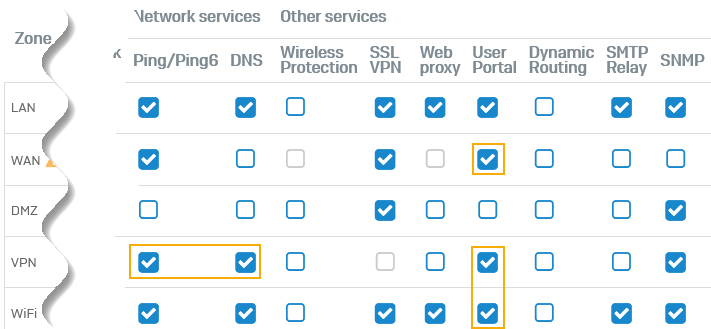
#Configuring a sophos ipsec windows client keygen

Click the Hash drop-down list and select one of the following hash types.ĪrubaOS VPNs support IKEv2 client authentication using RSA digital certificates, or Elliptic Curve Digital Signature Algorithm (ECDSA) certificates. Click the Encryption drop-down list and select one of the following encryption types. Click the Version drop-down list and select V2 for IKEv2. Enter a priority to 1 for the configuration to take priority over the Default setting. Scroll down to the IKE Policies section of the IPSEC tab, then click Edit to edit an existing policy or click Add to create a new policy.Įnter a number into the Priority field to set the priority for this policy. In case the Aruba dialer is used, these configuration need to be made on the dialer prior to downloading the dialer onto the local client When using a third-party VPN client, set the VPN configuration on clients to match the choices made above. The IKE policy selections need to be reflected in the VPN client configuration. If you do not want to use any of these predefined policies, you can use the procedures below to edit an existing policy or create your own custom IKE policy instead. Repeat the above steps to add additional CA certificates.ĪrubaOS contains several predefined default IKE policies, as described in Table 1. Select a CA certificate from the drop-down list of CA certificates imported in the controller. Under CA Certificate Assigned for VPN-clients, click Add. If you are configuring a VPN to support IKEv2 clients using certificates, you must also assign one or more trusted CA certificates to VPN clients. Select the IKEv2 server certificate for client machines using IKEv2 by clicking the IKEv2 Server Certificate drop-down list and selecting an available certificate name.

Note that these certificate must be imported into the controller, as described in Management Access. To configure the VPN to support machine authentication using certificates, define the IKE Server certificates for VPN clients using IKEv2.

Navigate to Configuration > Advanced Services > VPN Services and click the IPSECtab to return to the IPSEC window.Ĭlick the NAT Pool drop-down list and select the NAT pool you just created. If you do not enter an address into this field, the NAT pool uses the destination NAT IP 0.0.0.0. In the Destination NAT IP Address field, enter the destination NAT IP address in dotted-decimal format. In the End IP address field, enter the dotted-decimal IP address that defines the end of the range of source NAT addresses in the pool. In the Start IP address field, enter the dotted-decimal IP address that defines the beginning of the range of source NAT addresses in the pool. In the Pool Name field, enter a name for the new NAT pool, up to 63 alphanumeric characters. Navigate to Configuration > IP > NAT Pools. If you have not yet created the NAT pool you want to use: 1. If you enabled source NAT, click the NAT pool drop-down list and select an existing NAT pool. In the Source NAT section of the IPSEC tab, select Enable Source NAT if the IP addresses of clients need to be translated to access the network. Specify the pool name, the start address, and the end address. In the Address Pools section of the IPSEC tab, click Add to open the Add Address Pool page. Next, define the pool from which the clients are assigned addresses. Microsoft Challenge Handshake Authentication Protocol (MSCHAP)Ĭonfigure the IP addresses of the primary and secondary Domain Name System (DNS) servers and primary and secondary Windows Internet Naming Service (WINS) Server that is pushed to the VPN client. Currently supported methods are:Ĭhallenge Handshake Authentication Protocol (CHAP) Select the authentication method for IKEv1 clients. To enable L2TP, select Enable L2TP (this is enabled by default). Navigate to Configuration> Advanced Services > VPN Services and click the IPSEC tab. ĭefining Authentication Method and Server Addressesĭefining Authentication Method and Server Addresses 1.įirst, define the authentication method and server addresses Use the following procedures to in the WebUI configure a remote access VPN for IKEv2 clients using certificates. For additional information on the authentication types supported by these clients, see “ Working with IKEv2 Clients ”. Only clients running Windows 7, StrongSwan 4.3 and Aruba VIA support IKEv2. Configuring a VPN for L2TP/IPsec with IKEv2 in the WebUI Configuring a VPN for L2TP/IPsec with IKEv2 in the WebUI


 0 kommentar(er)
0 kommentar(er)
